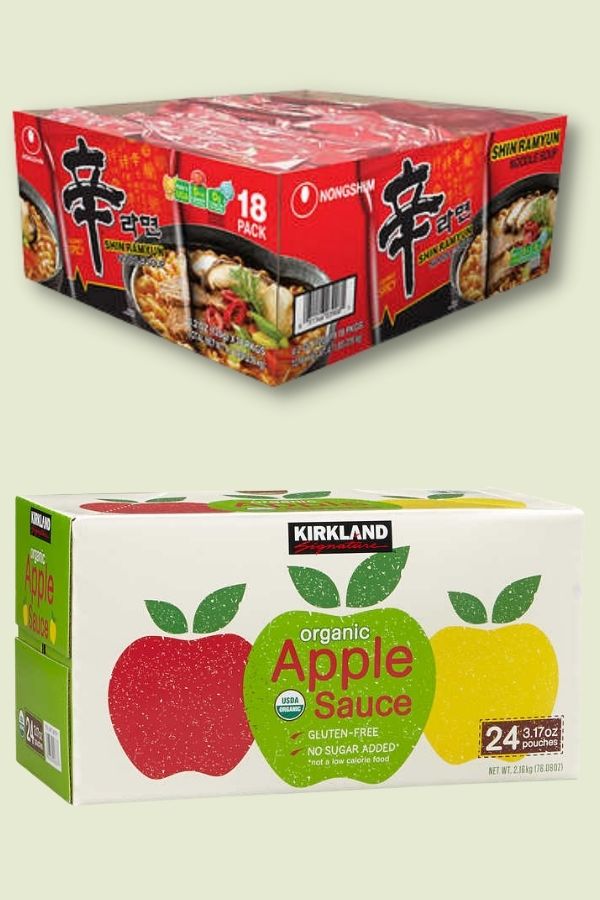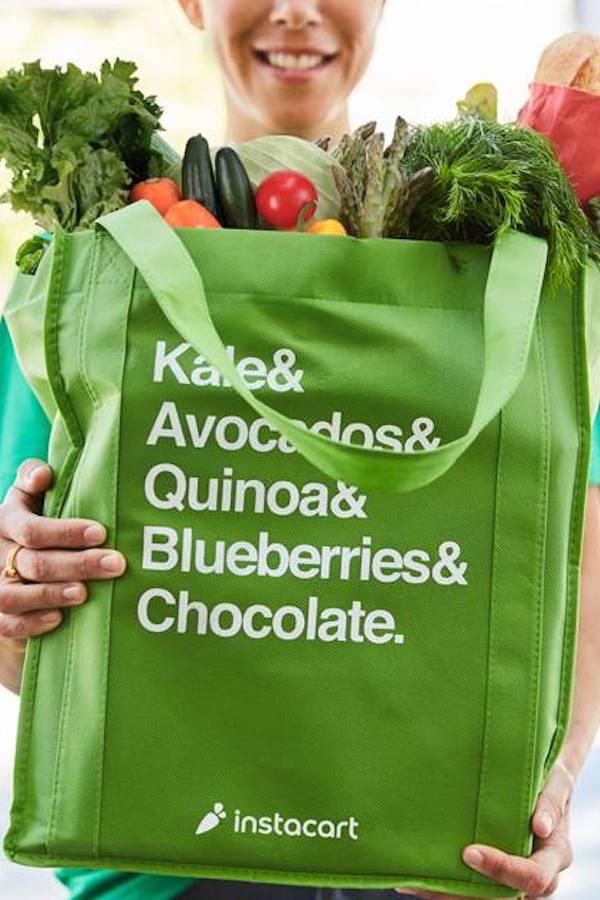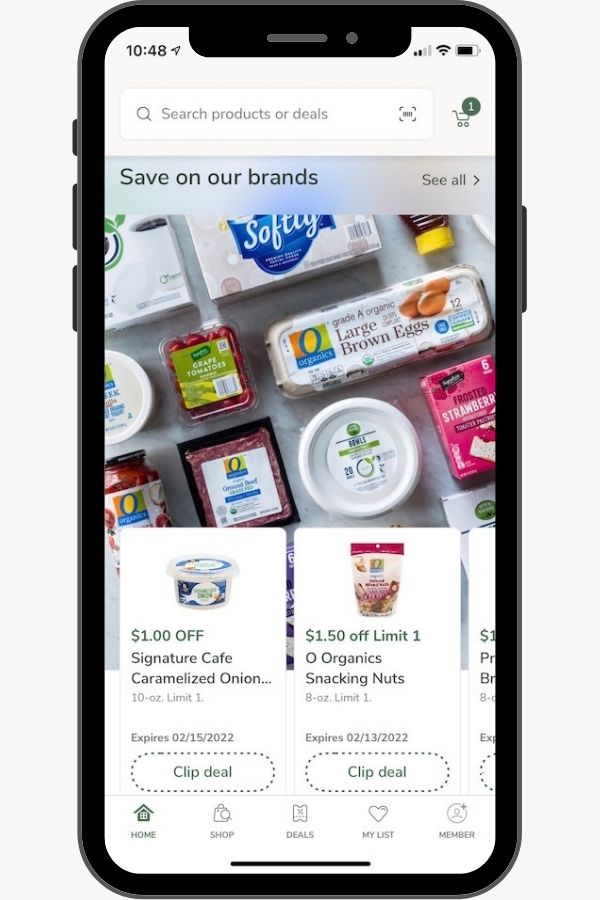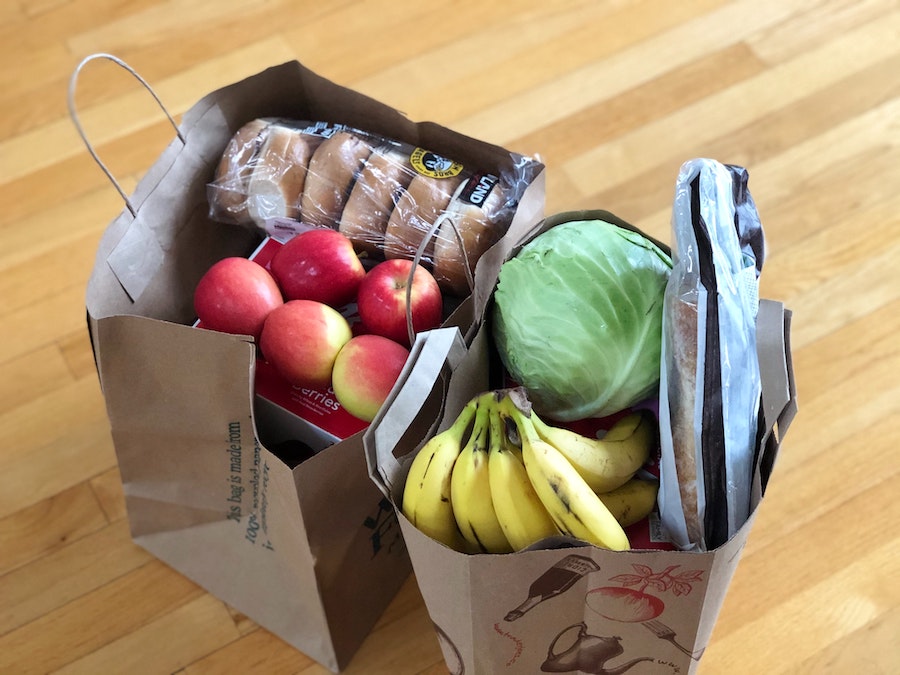Feeding a family of five during the worst of the COVID pandemic lockdown definitely made a dent in our budget, but now that things have gotten a little more normal, our spending on food is still so much higher than in pre-COVID days. Whether it’s supply-chain issues, inflation, labor shortages, or weather-related disruptions, I know I’m not alone in looking for ways to bring down our spending on groceries.
So to help you (and me) save money on groceries right now, I’ve turned back to some tips we shared in late 2020 after receiving a comment on a Cool Mom Eats Instagram post about high grocery bills. We turned to our awesome Recipe Rescue group on Facebook to ask our thousands of members for their top tips for saving on groceries as we restock our pantries and try to keep up with all the hungry mouths in our homes.
We got such great feedback, we wanted to be sure to share our favorite tips with you here.
– This post has been updated for 2022 –
This post may contain affiliate links. Your purchases may generate a small commission that helps support our team at no additional expense to you.
Top tips for saving on groceries, according to our readers
1. Set a budget and track your spending
Probably the most BOR-ing — but most important — of the all the ideas we received is mine. (Ha!) But, I swear it works! Spend a week or two writing down everything you spend on everything you consume. And I. Mean. Everything.
After the initial shock of the number I saw after adding up all the money we were spending on groceries, take out, and, ahem, booze, I came up with a budget that we could live with — all without giving up my husband’s pricey IPA’s or my favorite sushi. We now have a much better handle on the amount of money we can comfortably spend on not only the big supermarket trips, but on all the take-out, pizza delivery, and little purchases as well. It lets you know where you can easily cut.
2. Meal plan each week…with a few additional tricks

Image: Parmesan Herb Crusted Salmon at The Seasoned Skillet
We have published 200+ weekly meal plans right here if you need inspiration and ideas — and some of them are specifically designed for staying within tight budgets or maximizing leftovers. But here are some specific meal planning tips:
– Lisa (who writes half our meal plans) and I both agree: The minutes spent planning all meals for the week save dollars at the grocery store by cutting way back on impulse purchases. Especially if you’ve got kids eating lunch at home because of a Covid exposure at school or school breaks. Caroline B recommends you also plan breakfast, lunch and snacks. You may not need to get too granular on these, but it does help to consider what a week’s worth of food will look like when it covers all meals and snacks, before you hit the supermarket aisles and start throwing things into the cart.
– Another trick I learned is to build a “foundational plan” into my week like Meatless Monday, Taco Tuesday, Pizza Fridays, or Burger Night Saturdays which Beth B does to excite her boys about another weekend night at home with the parents. As Amiryah Martin reminded us on an episode of Spawned, it also cuts way back on time spent meal planning.
– Nichole Y suggests that we plan meals with the store’s sales page in front of you so that you know which ingredients will cost you less. You can also build meals around the ingredients on sale.
– Our Recipe Rescue Facebook group moderator (and kick-ass professional cake artist) swears by checking the clearance section of her grocery store for discounted cuts of meat, loaves of bread, and even fruits and veggies to feed her family.
– And be sure to take a good last look through your pantry and refrigerator before you hit the store to make sure you don’t pick up yet another can of pumpkin or garbanzo beans. It’s easy to forget those items you don’t use all the time.
3. Get creative with what you already have at home.
Speaking of looking through your pantry before you shop, how about using the foods you already have? I think of this as the food shopping version of “love the one you’re with” (ha) — and several of our commenters recommended we turn more often to our own pantries instead of the endless bounty of the grocery store.
Whether that’s easy meals you can make with pantry and freezer staples during the coronavirus quarantine or jazzing up what you have in house with some of the spices hiding in the back of your spice drawer, we agree that Jane S’s mantra to “use what you have” is probably the number one way to spend less at the grocery store.
4. Shop at lower-priced grocery stores. Everyone loves ALDI!
If you’re lucky enough to have an ALDI nearby, like our Recipe Rescue reader Michelle R, here are 10 money-saving finds at ALDI that make it worth the trip. It’s pretty remarkable how much money can be saved even if you only go once a month.
I also make a point to hit our local, low-priced New England chain, Market Basket, about twice a month. I go early in the morning to beat the crowds, that’s how good the prices are.
And don’t forget Daniel L’s tip to hit the ethnic grocery stores in your area. Our editor Liz agrees; she loves H Mart and the quality of all the delicious goodies there. Not only will you find things you can’t find at big chain groceries, but they have great prices on specialty ingredients, like the yellow curry paste Erin M found for $2 to flavor at least 5 meals, or big bags of ramen noodles, hold the flavor packets. Also look to Middle Eastern markets, Greek markets, and Indian markets if you have them nearby.
5. Buy in bulk…with a few caveats

Of course you know this tip if you’re reading this article, but there are some considerations when you’re using that membership card for a bulk-food store like Costco.
– Be sure you’ll eat what you buy. If you are a savvy shopper, buying the giant box may be well worth the initial price, like Liz and her 64-pack of ramen (ha), massive boxes of Goldfish, and the jumbo condiments from soy sauce to honey, cinnamon to olive oil. Just be sure you really will eat everything and don’t end up with the one flavor of yogurt in that variety pack that no one likes.
– Check the expiration dates on all items before you buy, to be sure you aren’t buying massive amounts of cheese, lunch meats, or eggs before you can reasonably consume them. Tip: when you’re buying eggs and milk, the later-dated dairy tends to be in the back.
(If you need tips about the difference between best by / use by / sell by dates, we have a guide right here.)
– Save with subscriptions. Recipe Rescue reader Elizabeth D smartly uses Amazon’s Subscribe & Save for the snacks her kids tear through each month. With savings up to 15% and delivery to your doorstep, this is a great money-saving option for those items you buy again and again.
– Restaurant supply companies can be a good source. If you live in New York City, take John B’s tip and check out supply company Baldor Food, which started home delivery after Covid decimated the restaurant industry. Baldor has provided John with beautiful, seasonal foods that he can even preserve through canning. As with anything, some prices may not be lower than Costco, so do a little price comparing before you go shopping.
– Consider investing in a chest freezer. It’s a lot easier to buy bulk foods if you have somewhere to store them which is why Kim G, Karen M, and Jessi S were all so grateful for having invested in chest freezers. This lets you take advantage of sale prices on meats for dinners, frozen fruits for smoothies, and even ice cream for impromptu hot-fudge sundae nights when you buy in bulk.
6. Shop less frequently…
I think many of us have cut way back on the number of supermarket runs we make just to pick up just “a few things” (though I’ve thankfully stopped wiping all my groceries down!).
Plus, I am literally incapable of walking out of a supermarket without spending at least $50. . .
Our reader Jessica finds that if she limits her supermarket stops to one big shopping every two weeks, with one small stop in between, she saves money — in large part because it forces her to use up what she has in the house besides buying new groceries.
7. …or don’t go into the stores at all
 Image: Instacart
Image: Instacart
Though delivery fees and generous tips (always!) add up, both Linda R and Dara O are big fans of grocery delivery services because they make far fewer impulse purchases than when they are leisurely browsing the aisles. If you can make a grocery list and stick to it when you do online shopping, you may agree that this is a money saver after all.
And if you get InstaCart orders (or another similar delivery service) frequently because you can’t or prefer not to go to the store, investigate whether it’s worth it to purchase an annual no-limit delivery subscription that saves fees in the long run.
8. Use tech to save money. Yes, on food!

Don’t forget about all the great grocery store coupon apps you can access straight from your phone! Recipe Rescue’s Sarah and I both use Ibotta to earn money back on products we’re already purchasing, while others sign up for their local store’s apps, like the highly rated Shaw’s app shown above.
You’ll get deals delivered straight to your phone, which makes “cutting coupons” so much easier and more convenient!
Also be sure to use browser extensions like Honey which can save you money in surprising places. Even Retail Me Not can save you on groceries from the big box stores, Amazon, delivery services like Uber Eats, even NYC delivery favorite Fresh Direct. It’s not just for Nordstrom!
9. Eat less meat
One of the biggest tips we received from commenters was to eat less meat to lower your grocery bill, especially right now when meat, eggs, and dairy prices are soaring. We have a lot of vegetarian recipes and vegan tips to help get you started!
This doesn’t mean you need to cross meat off your shopping list entirely — try even a night or two a week. In fact, Terre N, Dara O, Jane S, and Kim G all mentioned that they’d just increased the number of meatless meals they serve each week and it’s been effective in cutting their grocery bills.
Related: Mouthwatering burger recipes for grilling. And they’re not all beef.
5 easy vegetarian comfort food meals for fall that even meat-lovers will like
8 kid friendly vegetarian recipes for #MeatlessMonday
10. Try an Instant Pot.
It’s not just about convenience! Our readers described ways an Instant Pot helps them save money. First, you can cook in bulk and save leftovers. Second, you can more easily make things from scratch that you might ordinarily buy.
Be sure to check out these 5 ways to save money on groceries using your Instant Pot, such as turning cheaper cuts of meat into delicious dinners or making big batches of homemade yogurt.
11. Grow your own…that is, herbs and veggies
 Image: Markus Spiske on Unsplash
Image: Markus Spiske on Unsplash
Terre N started her own herb garden to both save some money on herb purchases, and to avoid the food waste of tossing precut herbs she couldn’t use up fast enough. It’s easy enough to grow your favorite herbs in little pots on a windowsill or to invest in a higher-tech herb gardening system like the Click and Grow.
It can also be as easy starting to regrow these 5 vegetables and other edibles quickly in your kitchen, from lettuce to garlic — no garden required.
Or, maybe you’re as ambitious as Jena L. and plan to construct a cold frame in your yard so that you can grow affordable salad greens this winter? Hey, maybe this can count as part of science class for virtual school.
12. Check into free school lunches/debit cards
Check your school district rules about breakfast and lunches right now, because there may be some options you hadn’t considered.
I, along with Linda R, Kale D, and Rachel G, still get free school lunches through the school district. Elizabeth D and Lauren M were even getting weekly food baskets from their districts filled with fresh vegetables and fruit during the height of the pandemic!
NYC public school parents in our group were grateful for the debit cards they were issued to transfer to individual students what would have been spent on in-school meals.
And though this isn’t a cost-savings idea, I especially love that Windi T and others made an in-kind donation to their school or local food pantry to offset the food they’ve accepted for free, so as to help families who are in greater need.
Finally, if you need to visit a food pantry for your family, please do. That’s what it’s there for. There’s nothing wrong with doing what you have to do to take care of your family during tough times.
Top image: Maria Lin Kim via Unsplash






I’d love to know what you get at Market Basket. We have one about 30 miles away and make a trip every couple of months.
Hi Jennifer–sorry that I’m just seeing this now but hope this is still helpful.
I save a ton of money just doing my regular food shopping at Market Basket, but here are a few of my top picks off the top of my head: Really good parmesan and other premium cheeses. Asian and Indian food ingredients/condiments. Tofu for under a dollar. Great prices on produce, esp herbs. Raw cashews. Beyond Meat sausage. Frozen veggies (2 lb bags are a great value). Rao’s sauce (esp on sale). SoDelicious Coconut Milk Creamer (quart is the price of the pint in another store). No-nitrate bacon. Bell and Evans fresh chicken. Good prices on frozen “fake meat”.
I hope that helps! Happy shopping!
Market Basket has consistently low prices and great products. If you have one close to you, I highly recommend it. (It is a New England grocery store chain)